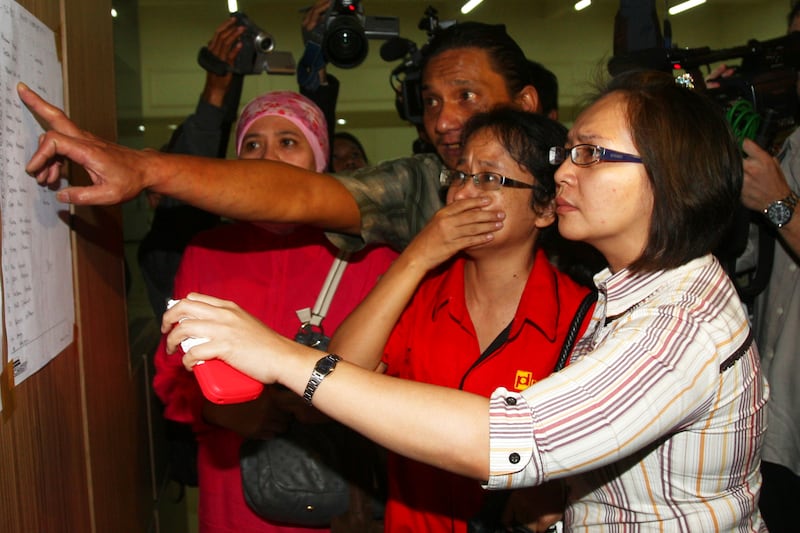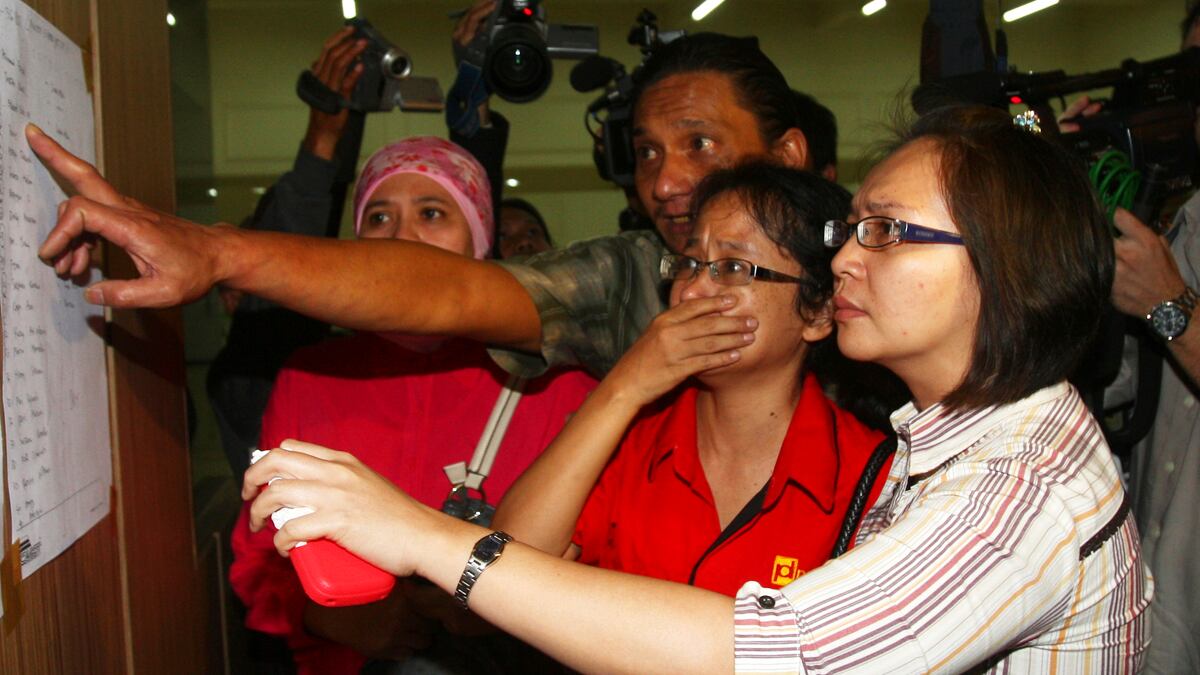When a Russian regional jet crashed into the Indonesian mountains south of Jakarta Wednesday during a demonstration flight, killing the 45 reporters and others onboard, a series of sad, incredulous messages populated my Twitter feed. I’d been on a similar SuperJet 100 demo flight with colleagues last year. The undercurrent was palpable: It could easily have been us.
And we weren’t alone: An outpouring of support and grief cascaded from the close-knit aviation community. There were also callous cracked jokes about the SuperJet 100, the first post-Soviet aircraft to launch, being not so super after all. Journalists started speculating about whether the crash would crush the company’s marketing strategy.
Wednesday’s ill-fated flight was part of a marketing program SuperJet International (the Russian-Italian joint venture that makes the plane) called “Welcome Asia,” a bullet point in its plan to court customers in Kazakhstan, Pakistan, Indonesia, Vietnam, Laos, and Myanmar. SuperJet has touted its plane from Moscow to Mexico as a replacement for aged-out workhorses such as the MD-80, with more capacity and larger galleys, lavatories, and overhead bins.
When I stepped on board at last year’s Paris air show, Carlo Occhiato, a longtime Italian pilot with a walrus mustache, escorted me into the cockpit. Occhiato said that his team had successfully trained 17 pilots on two planes, and that they planned to ratchet up training once a simulator from Thales, the French company whose avionics equip the jet’s flight deck, arrived in Moscow. (French authorities have been sent to Jakarta to aid Russian and Indonesian investigators looking into the crash.)
Occhiato expressed confidence in the technology and told me that the SuperJet 100’s cockpit was an upgrade over previous systems. “In emergency conditions, it is very easy to maintain and follow procedures because the system is very friendly for the pilot,” he said.
Later that day, we were scheduled to take a flight on the new jet over the outskirts of Paris. My colleague and I had literally run back over to the flight line because we thought we’d be late for the demo. We were wrong. At 4:30 p.m., we were still waiting. An hour and a half after that, my group of 15 or so journalists was finally seated onboard.

It was strange. Air shows are tightly scheduled affairs, and at a typical media briefing, companies whisk journalists from one activity to the next, but it became clear that SuperJet took a different approach to playing host. There was no corporate spiel during the hour-long flight, and, when it was over, we disembarked onto the runway and made our own way back into Paris. I thought it was odd at the time, although the flight itself was uneventful.
But such an unorthodox experience, frustrating and somewhat laughable at the time, takes on new significance (at least emotionally) in light of this week’s events.
An accident like yesterday’s inevitably generates fear and uncertainty, and several media outlets have been quick to point out the possibility of faulty engineering. As The New York Times noted, Sukhoi shirked direct involvement in the assembly process when a Russian television station reported that employees there had obtained fake engineering diplomas. Others have pointed to the inherently risky nature of such demo flights. David Learmount, an editor at the aviation-news website Flightglobal, thinks the fact that the flight was staged for prospective customers may have been a factor in the accident. Companies want to show off a new airplane on such flights, right up to the edges of its potential, he told RT.com. “Sometimes they push the limits just too far,” he said.
Just before the demo plane went off the radar yesterday, its pilot requested permission to descend to 6,000 feet from 10,000 feet, over dangerous mountain terrain. Among other potential problems, investigators will be exploring why an experienced pilot would have made such a request and whether a system failure could’ve misinformed the crew.
Stuart Barwood of Brolin Consulting, an aviation consultant who follows Sukhoi closely, says the accident hasn’t shaken his confidence in what he believes is a high-quality modern plane.
“I think many people have been quick to make sweeping claims about Sukhoi and Russian aviation based on scant information,” he told me this morning. “Almost as soon as the news broke, observers began referring to the SuperJet program in the past tense,” he said. “While this has no doubt been a tragedy, this does not mean an end to the aircraft or the company.” Barwood pointed out that an Airbus A320, today one of most successful aircraft in the world, crashed at an air show in 1988—during a demo flight.
Regardless of the accident’s root causes—a mechanical issue, pilot error, weather, a combination of all, or none of the above—it’s bad press for a company that’s trying to compete globally with the likes of Bombardier and Embraer. Seven SuperJet 100s have entered service with Russian flag carrier Aeroflot and Armenia’s Armavia, and more are slated to join the fleet of Mexico’s Interjet later this year. Mexico certified the plane for operations in April. Back in 2010, Russian media reported the aircraft’s SaM146 engine, designed by PowerJet, failed certification tests; it was later certified, and the aircraft has been flying in Russia with Aeroflot since last year. The engine issue also held up European certification, but that came through in 2010; European authorities certified an upgraded version of the engine in January.
SuperJet had high hopes of drumming up new business in Southeast Asia. The Jakarta Post reported Thursday that four Indonesian airlines had expressed interest in purchasing the Russian-made planes but all Superjet 100 sales in Indonesia have been suspended pending the investigation.
It seems likely that investigators will take a closer look at safety conditions in Indonesia as well. Aside from a handful of major carriers, it’s airlines remain on the European Union’s blacklist of those banned from operating within its borders.
Is the Superjet doomed? It’s too early to say, but as Stuart Barwood pointed out, “the timing of the accident couldn’t be worse.” As authorities sort out the investigation, SuperJet faces the unenviable task of pulling a successful program from the wreckage.





